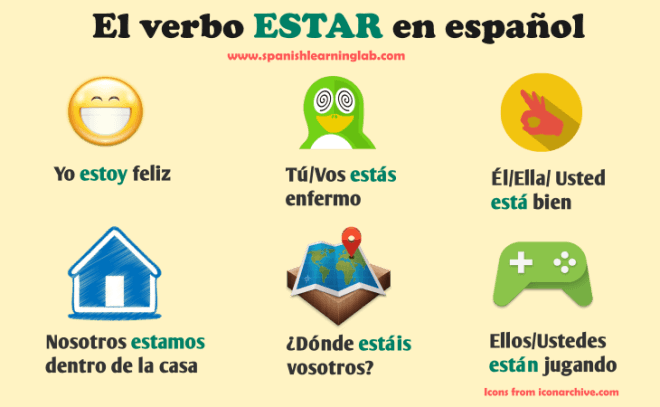
The Spanish future perfect tense is used to express actions that will have been completed in the future, indicating an action that will be finished before another specified future time or event. (They have been traveling through different countries.) Ellos han estado viajando por diferentes países.Habéis estado trabajando duro todo el día.Spanish past perfect tense (also known as “pretérito pluscuamperfecto”) is used to describe actions that occurred before another past action or event, expressing a past-in-the-past relationship. Past Perfect / Pretérito Pluscuamperfecto Spanish present perfect tense (also known as “pretérito perfecto compuesto”) is used to express actions that have occurred in the past but have a connection to the present, emphasizing the result or consequences of those actions. Present Perfect Estar Conjugation / Pretérito Perfecto Compuesto (They would be back from their trip tomorrow.) Mañana estarían de regreso de su viaje.(He would be happier if you gave him a chance.) Él estaría más contento si le dieras una oportunidad.The conditional tense is used to express hypothetical or speculative actions or events that would happen under certain conditions in the present or future. Durante el fin de semana estaremos de viaje.❾starás listo para el examen? (Will you be ready for the exam?).(Tomorrow I will be home to receive you.) The Spanish future tense is used to express actions or events that will happen in the future, indicating something that has not yet occurred.

(You were enjoying your vacation at the beach.)

The present tense is used to describe actions happening in the present or to express general truths or habitual actions. Present Tense Estar Conjugation / Presente The indicative mood is used to make factual statements, ask questions, and express opinions about actions or events that are considered real or certain. The indicative tense ( el modo indicativo ) is one of the three grammatical moods used to express different attitudes or purposes in speech. “Estar” Conjugation in Spanish Indicative / Indicativo Additionally, “estar” is used to form the present progressive tense, indicating ongoing actions. The verb “estar” is commonly used to express location, feelings, physical conditions, and temporary states. Unlike the verb “ser,” which also means “to be” but is used for permanent or inherent qualities, “estar” is used for temporary states or conditions. It is an irregular verb that is used to indicate a state of being, location, or temporary condition. The verb “estar” is one of the most important and frequently used verbs in the Spanish language. Are you ready to learn about the “estar” conjugation in Spanish?


 0 kommentar(er)
0 kommentar(er)
